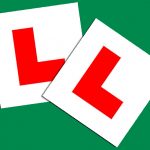BE WISE
 ROAD SAFETY and breakdown cover specialist GEM Motoring Assist is encouraging family members to be wise to the early signs of unsafe driving in their senior relatives.
ROAD SAFETY and breakdown cover specialist GEM Motoring Assist is encouraging family members to be wise to the early signs of unsafe driving in their senior relatives.
The call follows the tragic case of Gertrude Lister, the 95-year-old driver who put her foot on the accelerator instead of the brake following a visit to her husband’s grave last February. She crashed into a hedge and killed a cemetery worker.
Last week a judge sentenced Mrs Lister to 16 months in prison, suspended for two years, and banned her from driving for the rest of her life.
There are more than 100,000 drivers aged over 90 in the UK, and more than 500 centenarians still hold licences.
STAY SAFE
GEM road safety officer Neil Worth comments: “We want as many people as possible to enjoy the freedom of the open road for as long as possible, but only while they are safe.
“Warning signs relating to failing health or reduced ability can develop slowly and gradually in older drivers. This often means they won’t be aware of their changing actions or the growing risks they may pose – to themselves and to others – on journeys.
“The only requirement in law for any driver aged over 70 is to declare every three years that they are fit to drive. In the absence of re-testing and mandatory eyesight checks, it’s vital that family members and friends are willing to keep an eye on their senior relatives – and take appropriate action if anything causes them concern.”
DANGER SIGNS
GEM suggests the following signs that suggest a high risk of danger with a requirement for immediate action:
- ‘Close calls’ – or ‘oops factor’ moments where a crash almost happens
- Dents and scrapes on the car as a result of hitting fences, posts or kerbs
- Traffic penalty tickets, such as speeding and red traffic light violations
GEM also advises family members and friends to look out for the following common signs that could indicate an increase in the risks posed by a senior driver. Most are minor on their own, but can combine to present a significantly increased risk:
- Difficulty seeing traffic lights and road signs
- Reduced awareness of drivers coming from the side or the rear
- Not reacting to an approaching emergency siren
- Slow reaction when required to brake or alter direction suddenly
- Confusing the accelerator and brake pedals
- Erratic decision-making
- Getting flustered or angry over minor matters
- Difficulty looking over shoulders to check before pulling out
- Missing familiar exits or turnings
- Drifting in and out of lanes on motorways and dual carriageways
- Failing to indicate correctly (or at all)
- Failing to cancel an indicator
DEALING WITH CONCERNS
“If you decide that there is good reason to be concerned about a senior relative, then try to have an informal, friendly chat. If your relative is unwilling to have that conversation, you could attempt to inform their GP, or all else fails, you could report them to the DVLA. You can do this anonymously if you wish,” says Neil Worth.
“Safety has to be everyone’s priority, even if you risk upsetting some close to you. The potential consequences of not acting are ultimately much, much worse.”
GEM’s recently-published resource, Still Safe to Drive, gives a range of practical advice to help senior drivers stay as safe as possible for as long as possible. Take a look at www.stillsafetodrive.org.uk/
Follow GEM on Twitter @MotoringAssist for the latest industry news.




















